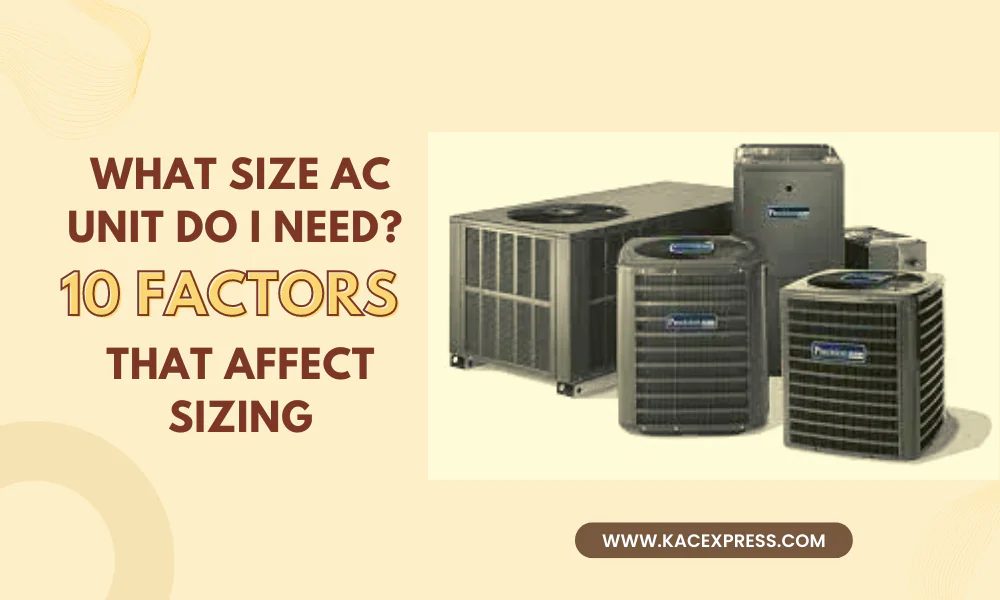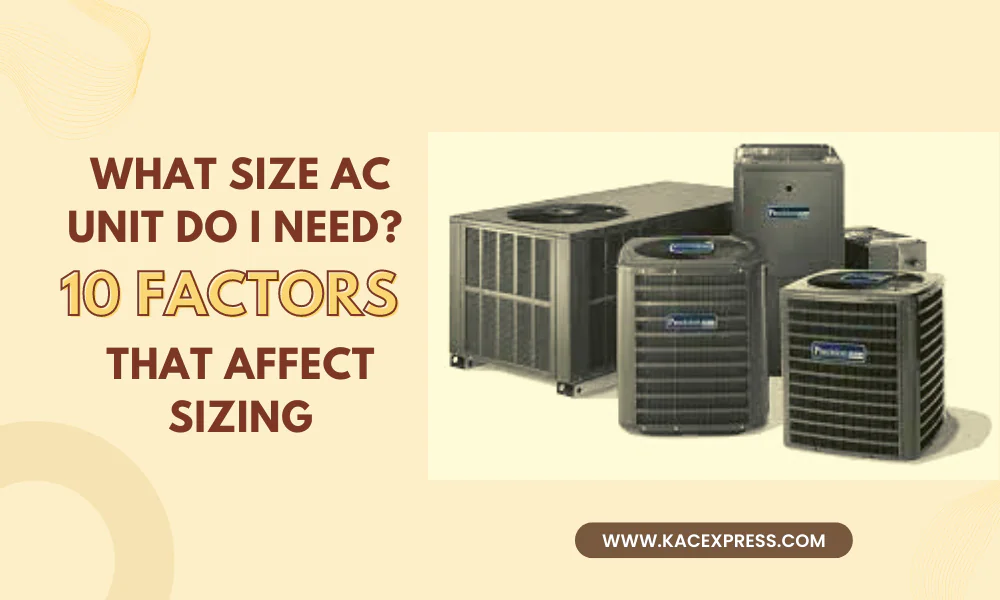As HVAC professionals, we frequently receive inquiries from clients regarding the size of their home’s air conditioning unit. The truthful response is that the ideal size might vary depending on the particular cooling issues faced by each residence. We’ll go over how “sizing” an air conditioner operates and what elements need to be taken into account when figuring out what size air conditioner your home needs below.
Why Does Size Matter?
An undersized AC unit is unlikely to adequately chill a property, even though it may run nonstop and increase your energy cost in the process. It simply lacks the power to complete the task. But according to some studies, bigger isn’t always better in the case of a new AC unit.
When an air conditioner is too big, it will quickly cool your house, but it will then shut itself off since it has achieved the desired temperature. Although that might not seem like a big deal at first, you’ll soon learn that your home never quite provides the degree of comfort you anticipate.
A large portion of the humidity (and overall stickiness) remains unaddressed if an enormous unit cools the air and then abruptly turns off. The right system size is obtained by evaluating all pertinent information, including a home’s floor design, location, and even construction process. The 10 parameters listed below may be the most important for estimating the appropriate tonnage required for a particular house out of the many variables the algorithm takes into account.

1. House Size
The size of your house is an excellent place to start when estimating cooling requirements. In addition to calculating your house’s square footage and cubic foot volume during the initial home analysis, we will measure the height of your ceilings. Compared to a home with typical 8-foot ceilings, a home with high, vaulted ceilings uses more cooling electricity.
The design of the home is equally crucial. The square footage of a two-story home and a ranch-style home may be comparable, but their cooling requirements will be different for a variety of reasons, including the possibility that the roof area of the ranch home may be twice that of the two-story home.
2. Location
According to experts, “a house in Colorado will have different cooling needs than a house of the same size in Texas or Florida.” Homes in hot, humid climes typically need larger air conditioning systems than homes in colder, drier areas.
Although “location” includes factors specific to your home, it also includes factors related to the general climate in your area: Do the big trees in your yard provide shade during the daytime hours? Does your home offer any defense against the sun’s harmful rays? What direction does your home face the sun?
3. Number (and Type) of Windows
Although windows let in light and provide beautiful views of the outside, they are frequently a cause of energy loss, which results in higher cooling costs. Experts contend that the type of windows in your house is just as important as the number of windows in determining the size of the AC system you’ll require.
Our experts will record the number, size, and type of windows in your home while doing a Manual J load calculation. Compared to Low-E windows (low-emissivity film-coated windows that reflect the sun’s heat away from your home), single-pane windows are less energy-efficient than double-pane, triple-pane, and Low-E windows. The amount of tonnage needed may be decreased by the availability of energy-efficient windows.
4. Existing Insulation
On a steamy summer day, insulation is crucial in preventing heat from the outside from entering your house. The type and quantity of insulation in the attic and walls of your home will be noted by our representatives. We’ll also think about insulated entry doors.
Although older homes that were built before the building regulations were into force may have insufficient insulation, most localities have building codes that mandate a minimum quantity of insulation in both walls and ceilings. These older buildings can need a bigger air conditioning system to keep the house comfortably cool.
5. Existing Ductwork
Another factor to take into account when sizing an AC system for your home is the kind and state of the existing ductwork. If the current ductwork is leaky or in an awkward location, a trained expert can install new ductwork in addition to connecting a new central air system to it.
If new ducting is required, We will install it in compliance with Manual D (Residential Duct Design) requirements from the ACCA. Homeowners can be confident that they are getting not only the proper size AC system but also the best ductwork because these may be more stringent than your local construction rules. Additionally, new ducting is another issue that may result in a smaller-than-needed AC unit.
6. Wall Insulation
You wouldn’t need as much air conditioning if your walls were well-insulated. There won’t be a rapid loss of heat in space. If you don’t have insulation, the room will quickly warm up after the air conditioner is turned off. It must be left on for longer periods and at a higher power level.
7. Number of People
The recommended increase in cooling capacity by 600 BTU per person is made by Energy Star. If a high number of individuals spend most of the day in the room, this condition is applicable. It is critical to take into account the number of people who will be in a room because human bodies produce heat.
8. Energy Consumption
To get the most economical solution, you must look at the energy efficiency rating or EER rating. The rating is between 8 and 11.5. The system is more energy-efficient the higher the rating. Environmentally friendly AC units are available. They don’t release any heat or dangerous gases into the air.
9. Ceiling heights
The size of the room is a significant factor. High ceilings increase a room’s volume and may necessitate a larger air conditioning unit since they increase the size of the air conditioning unit, which is frequently decided by the floor space. A smaller air conditioner would have to work more, consume more energy, and possibly be less effective.
10. Is it a cold or warm room in general
East or west-facing sunny rooms are nice in the winter but could get rather hot in the summer. The most moderate rooms are those that face north, while south-facing rooms will, of course, be colder. When determining how much heating or cooling a room needs, keep these factors in mind. Your heating and cooling requirements will change as a result of the increased temperatures in rooms with tumble dryers and open-concept kitchens.



0 Comments